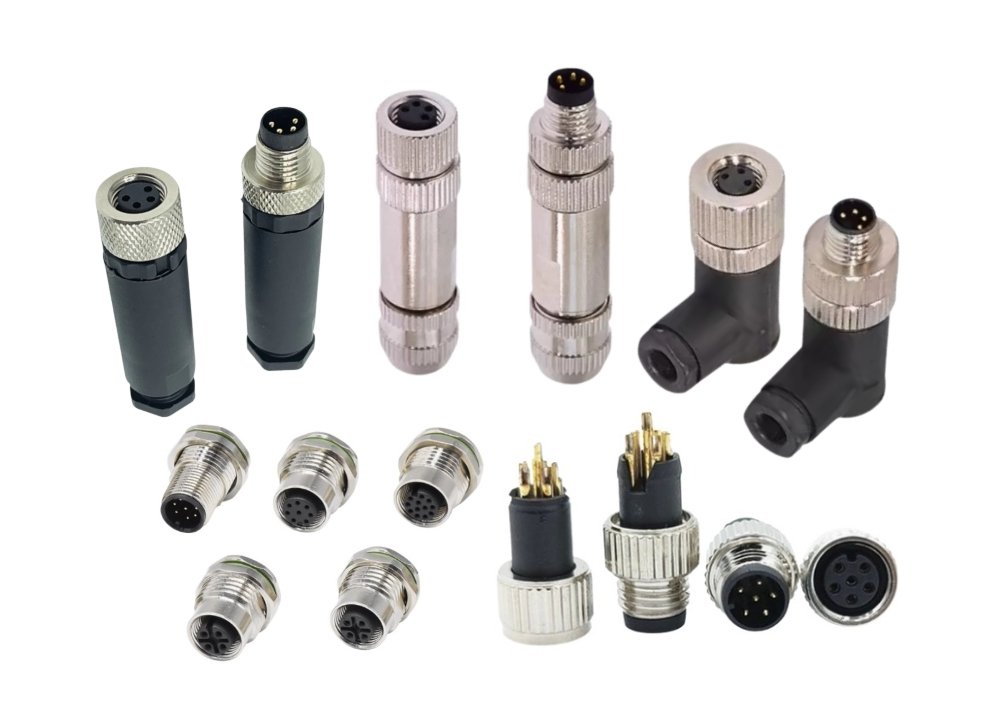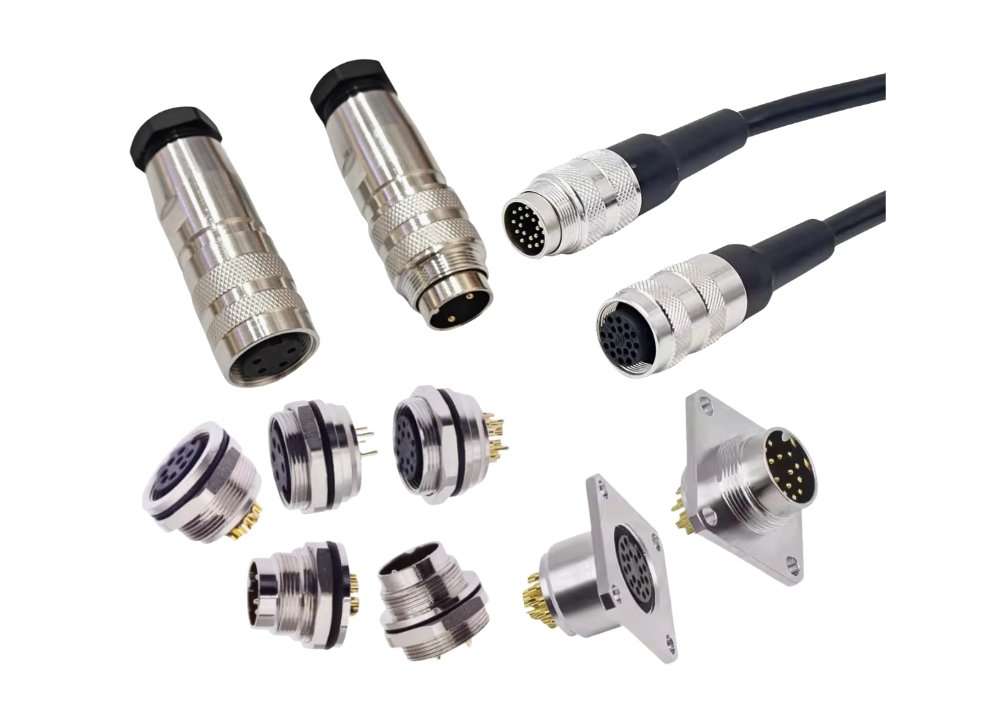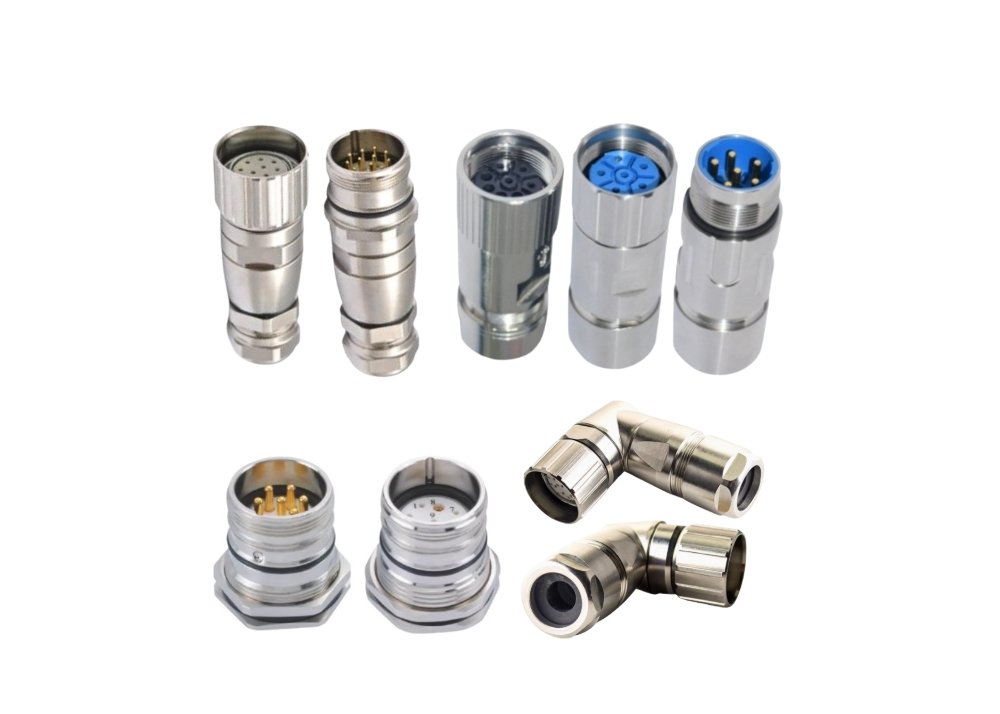
Engineers often compare M916 vs. M16.12 Connectors when selecting components for industrial systems. M916 connectors excel in environments requiring high durability and robust electrical performance, while M16.12 connectors offer better compatibility with legacy equipment, including M8 connector systems and Type B connector standards. A connector factory usually recommends M916 for modern, high-stress applications and M16.12 for retrofitting or mixed-technology setups.
M916 vs. M16.12 Connectors: Compatibility Analysis
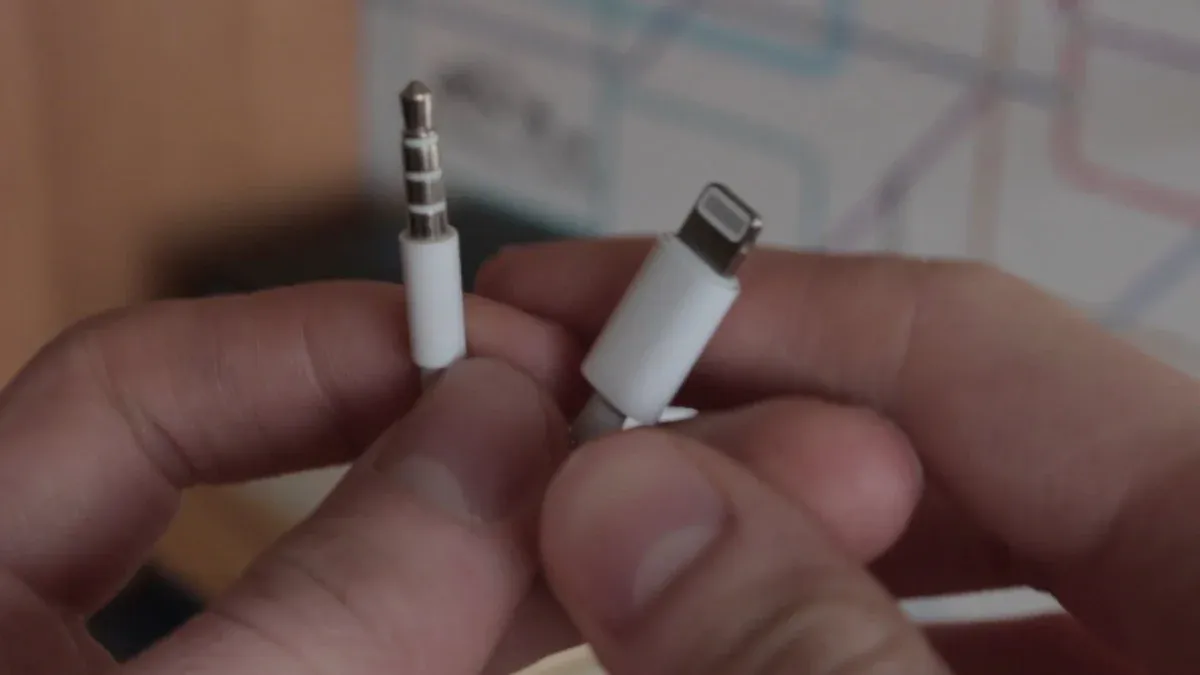
Pin Configuration and Physical Fit
Connector Dimensions
M916 connectors typically feature a compact cylindrical design, optimized for installations where space is limited. Their outer diameter often measures slightly less than that of M16.12 connectors, making them suitable for dense control panels and compact machinery. M16.12 connectors, on the other hand, follow the M16 standard, resulting in a slightly larger profile. This increased size allows for more robust mechanical strength and easier handling during installation, especially in environments where technicians wear gloves or require a firmer grip.
Pin Layout and Numbering
The pin layout in M916 connectors usually follows a straightforward linear or circular arrangement, with clear numbering to prevent wiring errors. These connectors support a range of pin counts, from 3 to 12, depending on the application. M16.12 connectors offer more flexibility in pin configuration, supporting both standard and custom layouts. Their numbering system aligns with international standards, which simplifies integration into existing systems and reduces the risk of miswiring during maintenance or upgrades.
Mating and Locking Mechanisms
M916 connectors employ a push-pull or threaded locking mechanism, ensuring a secure connection even in high-vibration environments. This design minimizes accidental disconnections and maintains signal integrity. M16.12 connectors often use a screw-lock or bayonet coupling system, providing a tactile and audible confirmation when fully engaged. These mechanisms enhance reliability in industrial settings where connectors may experience frequent mating cycles or exposure to mechanical stress.
Electrical Compatibility
Voltage and Current Ratings
M916 connectors are engineered to handle moderate voltage and current levels, typically supporting up to 250V and 10A per contact. This makes them suitable for most control and signal applications. M16.12 connectors, due to their larger size and enhanced insulation, can accommodate higher voltage and current ratings, sometimes exceeding 400V and 16A. This capability allows them to serve both power and signal transmission roles in more demanding environments.
Signal Types Supported
Both connector types support a wide range of signal types, including analog, digital, and power signals. M916 connectors excel in transmitting low-voltage control signals and sensor data. M16.12 connectors, with their broader pin count and higher ratings, can handle mixed-signal applications, combining power, data, and control lines within a single connector body. This versatility streamlines wiring and reduces the number of connectors required in complex systems.
Shielding and Grounding Considerations
M16.12 connectors feature rugged metal shells that provide 360° EMI shielding, ensuring effective electromagnetic interference protection. The shielding uses metal components such as shielding rings or cable clamps, meeting the attenuation requirements of the DIN 47250-6 standard. This design maintains signal integrity, especially in environments with high electromagnetic noise. The outer housings, made from nickel-plated brass, offer environmental protection and high resistance to vibration and shock. Grounding is inherently supported by the continuous conductive metal shells and shielding elements, creating a reliable path to reduce EMI. These connectors comply with AISG standards and are designed for harsh environments, including 5G network applications.
Modern M16.12 connectors, housed in metal bodies, may include shielding against electromechanical interference (EMI) and offer protection levels up to IP67 or IP68. The metal housing and shielding contribute to grounding by providing a continuous conductive path. Most M16.12 connectors provide full 360° shielding performance, using metal shielding layers inside the connector to prevent electromagnetic interference through reflection, absorption, and the skin effect. This shielding ensures good electromagnetic compatibility (EMC). While unshielded versions exist for power applications, shielded types are preferred for data and signal connections. The connectors comply with international standards such as DIN IEC61076-2-106 and AISG C485, supporting stable and safe electrical and signal connections in wireless communication systems.
M916 connectors also offer shielding and grounding features, but their performance may not match the comprehensive EMI protection found in M16.12 connectors. For applications where electromagnetic compatibility is critical, M16.12 connectors provide a clear advantage.
Interchangeability and Limitations
Cross-compatibility Scenarios
M916 vs. M16.12 Connectors often come up in discussions about cross-compatibility. While both connectors share similar form factors, their pin layouts, locking mechanisms, and electrical ratings may differ. Direct interchangeability is rare unless the system specifically supports both standards. In mixed-technology environments, engineers must verify compatibility at both the mechanical and electrical levels before attempting substitution.
Adapter and Conversion Options
Adapter solutions exist for connecting M916 and M16.12 connectors to each other or to other connector types. These adapters bridge differences in pin configuration, voltage rating, or locking style. However, using adapters can introduce additional points of failure and may impact signal integrity. Engineers should select adapters that maintain shielding and grounding continuity to preserve EMC performance.
Common Pitfalls and Mistakes
Engineers sometimes overlook subtle differences in pin numbering or mating depth when substituting one connector type for another. This oversight can lead to miswiring, intermittent connections, or even equipment damage. Another common mistake involves neglecting the shielding and grounding requirements, especially in high-EMI environments. Always consult manufacturer datasheets and compatibility charts before integrating M916 vs. M16.12 Connectors into a system.
M916 vs. M16.12 Connectors: Performance Comparison
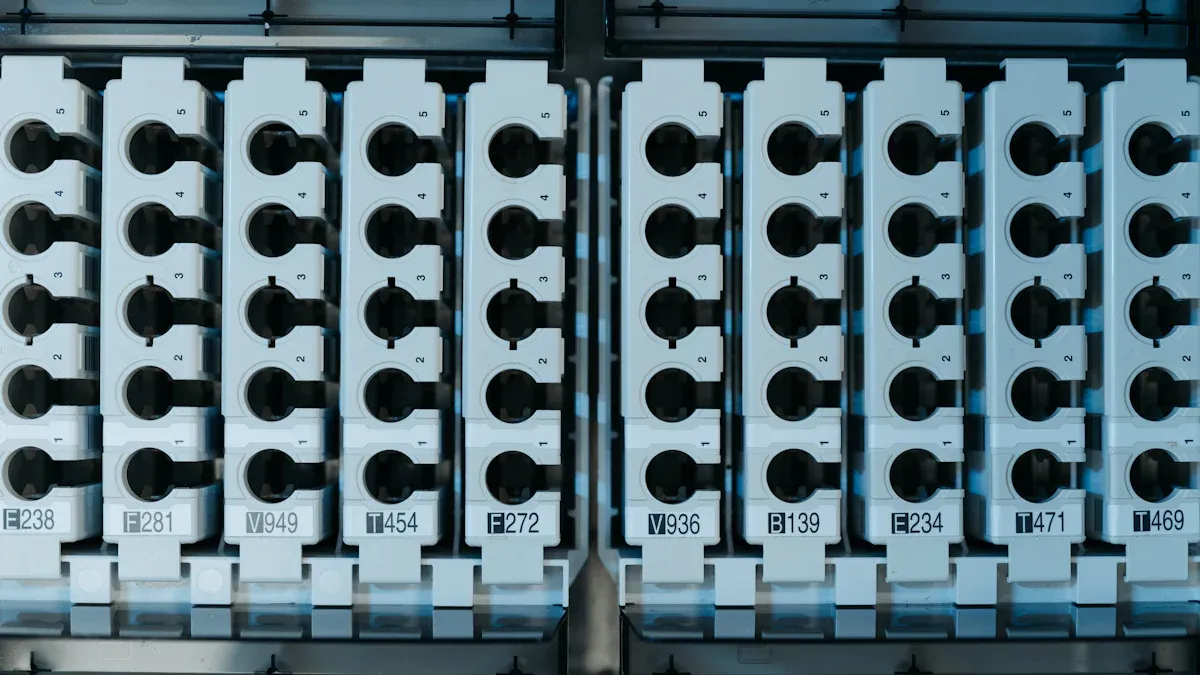
Signal Integrity and Transmission Quality
Data Rate Capabilities
M916 vs. M16.12 Connectors show distinct differences in data rate support. M916 connectors typically handle moderate data rates, making them suitable for sensor signals and control systems. Their contact design minimizes signal loss, supporting reliable transmission for industrial automation. M16.12 connectors, with their larger pin count and enhanced shielding, accommodate higher data rates. These connectors often appear in environments where fast and stable data transfer is critical, such as telecommunications and advanced manufacturing. The robust construction of M16.12 connectors allows for integration into systems that require gigabit-level speeds.
Noise and Interference Resistance
Signal integrity depends on a connector’s ability to resist noise and interference. M916 connectors provide basic shielding, which protects low-voltage signals from ambient electromagnetic interference. Their compact design reduces the risk of crosstalk between adjacent pins. M16.12 connectors feature comprehensive 360° EMI shielding, using metal shells and internal layers to block external noise. This shielding ensures stable performance in high-EMI environments, such as wireless communication systems and data centers. The continuous conductive path in M16.12 connectors supports effective grounding, further enhancing noise resistance.
Contact Resistance and Reliability
Contact resistance affects both signal quality and long-term reliability. M916 connectors use precision-machined contacts that maintain low resistance over time. Their push-pull or threaded locking mechanisms keep connections stable, reducing the risk of intermittent faults. M16.12 connectors employ gold-plated contacts, which resist corrosion and maintain consistent conductivity. These connectors support over 500 mating cycles, ensuring reliable operation in applications with frequent connection changes. The threaded coupling in M16.12 connectors prevents loosening, maintaining low contact resistance even under mechanical stress.
Durability and Environmental Resistance
Material Quality and Construction
Manufacturers design M916 vs. M16.12 Connectors with durability in mind. M916 connectors use nickel-plated brass or stainless steel housings, which resist physical impacts and temperature extremes. Their compact form factor suits installations in tight spaces. M16.12 connectors feature rugged metal shells, often made from nickel-plated brass, providing strong corrosion resistance and mechanical robustness. The construction of M16.12 connectors supports long-term reliability in harsh environments, including exposure to chemicals and moisture.
IP Ratings and Environmental Sealing
Ingress protection (IP) ratings indicate a connector’s ability to withstand dust and moisture. M916 connectors typically achieve IP67 ratings, ensuring resistance to water immersion and dust ingress. This level of protection suits outdoor installations and industrial machinery. M16.12 connectors often reach IP68 ratings, offering enhanced sealing against prolonged water exposure and fine particulates. The screw connections in M16.12 connectors create waterproof, vibration-resistant seals, supporting safe operation in challenging conditions.
Vibration and Mechanical Stress Tolerance
Connectors must withstand vibration and mechanical stress in many industrial and automotive settings.
Both M916 and M16.12 connectors use circular designs and threaded locking mechanisms to create secure, vibration-resistant connections.
Nickel-plated brass or stainless steel housings resist physical impacts and temperature extremes.
Threaded couplings prevent loosening under mechanical stress, maintaining stable connections.
M16.12 connectors feature mechanical characteristics such as IP68 protection, over 100 mating cycles, and cable retention forces up to 80N.
Gold-plated contacts in M16.12 connectors help maintain corrosion-free, reliable connections under mechanical stress.
The design of both connector types supports reliable operation in environments with constant vibration or mechanical shocks, such as machinery and vehicles.
Application-Specific Performance
Industrial Applications
M916 vs. M16.12 Connectors serve different roles in industrial environments. M916 connectors excel in compact control panels and sensor arrays, where space and reliability matter. Their moderate voltage and current ratings suit automation systems and robotics. M16.12 connectors, with higher ratings and robust construction, fit heavy machinery, process control, and power distribution. Their enhanced sealing and shielding make them ideal for factories with high electromagnetic interference and exposure to dust or moisture.
Automotive and Transportation Uses
Automotive and transportation systems demand connectors that resist vibration, shock, and environmental hazards. M916 connectors appear in vehicle sensor networks and control modules, where compact size and secure locking are essential. M16.12 connectors, with their rugged shells and threaded couplings, withstand the harsh conditions found in trains, buses, and heavy vehicles. Their high IP ratings and mechanical strength ensure reliable performance in engine compartments and exterior lighting systems.
Telecommunications and Data Centers
Telecommunications and data centers require connectors that support high data rates and stable signal transmission. M916 connectors provide reliable connections for control signals and low-speed data lines. M16.12 connectors, with their advanced shielding and high pin counts, support gigabit data rates and mixed-signal applications. Their robust construction and environmental sealing protect sensitive equipment from dust, moisture, and electromagnetic interference, ensuring uninterrupted network performance.
Pros and Cons of M916 vs. M16.12 Connectors
M916 Advantages and Drawbacks
Strengths of M916
- Compact design fits tight spaces in control panels and machinery.
- Push-pull or threaded locking mechanisms provide secure connections, even in high-vibration environments.
- Nickel-plated brass or stainless steel housings offer strong resistance to corrosion and physical impact.
- IP67-rated sealing protects against dust and temporary water immersion.
- Precision-machined contacts ensure low contact resistance and stable signal transmission.
- Suitable for moderate voltage and current applications, making them ideal for automation and sensor networks.
Limitations of M916
- Lower voltage and current ratings compared to M16.12 connectors restrict their use in high-power applications.
- Basic shielding may not provide sufficient protection in environments with significant electromagnetic interference.
- Limited pin count reduces flexibility for complex wiring needs.
- Not always compatible with legacy systems or mixed-technology setups.
- Fewer options for field-attachable or panel mount configurations.
M16.12 Advantages and Drawbacks
Strengths of M16.12
- High data rate support up to 10 Gbit/s, suitable for Ethernet/IP, PROFINET, and Power over Ethernet (PoE) applications.
- IP67 and IP68 protection ratings ensure robust performance in harsh industrial and outdoor environments.
- Secure screw locking system, compliant with DIN EN 61076-2-106, maintains reliable mechanical connections.
- Withstands high temperatures, dust, humidity, vibrations, and electrical disturbances.
- Excellent electromagnetic compatibility (EMC) properties maintain signal integrity in noisy environments.
- Available in both field-attachable and panel mount versions for flexible installation.
- Complies with AISG standards, supporting remote electrical tilt (RET) antenna control systems.
- Rugged metal housings with nickel plating and gold or silver contacts prevent corrosion.
- Compact size with high pin count supports complex signal and power requirements.
- Cost-effective alternative for 5G, industrial automation, and Ethernet communications.
Note: M16.12 connectors offer a comprehensive solution for modern industrial and telecom applications, meeting the demands of Industry 4.0 and Industrial IoT.
Limitations of M16.12
- Larger physical size may not suit installations with strict space constraints.
- Higher cost compared to simpler connector types, especially for shielded or high-pin-count versions.
- More complex installation process due to screw locking and sealing features.
- May require specialized tools or training for proper assembly and maintenance.
- Not always interchangeable with M916 connectors, which can complicate retrofitting or upgrades in existing systems.
M916 vs. M16.12 Connectors each present unique advantages and limitations. Engineers should evaluate these factors based on the specific requirements of their application, considering compatibility, performance, and environmental demands.
M916 vs. M16.12 Connectors: Use Case Recommendations
Best Scenarios for M916
Ideal Industries and Environments
M916 connectors perform well in environments where compact size and moderate electrical ratings are essential. Automation facilities, robotics labs, and sensor networks often rely on these connectors. Their IP67 sealing and corrosion-resistant housings make them suitable for indoor industrial settings, control panels, and machinery with limited space. Engineers select M916 connectors for applications that demand reliable signal transmission but do not require the highest levels of environmental protection or voltage capacity.
Typical Devices and Systems
Manufacturers equip programmable logic controllers, compact sensor arrays, and small-scale automation devices with M916 connectors. These connectors appear in robotics arms, conveyor systems, and environmental monitoring stations. Devices that require frequent reconfiguration or maintenance benefit from the push-pull or threaded locking mechanisms of M916 connectors. Their moderate pin count supports straightforward wiring in control and signal circuits.
Best Scenarios for M16.12
Ideal Industries and Environments
M16.12 connectors serve heavy-duty industrial sectors where durability and robust performance are critical. Mining operations, oil exploration sites, and engine environments demand connectors that withstand vibration, temperature extremes, and corrosion. Factory automation, transportation systems, and industrial networking also utilize M16.12 connectors due to their rugged construction and high IP ratings. Market research highlights steady growth in the use of M16 Series connectors, driven by the need for reliable connections in harsh environments.
Typical Devices and Systems
- Sensor and actuator assemblies in industrial automation
- Machine interfaces for data and signal transmission
- Connections between devices and control cabinets
- Solenoid valve connectors and voltage supply systems
- Cable splitters, distributors, and control cabinet feedthroughs
- Miniature circular connector applications requiring shielded EMC compliance
Engineers choose M16.12 connectors for systems that require shielded, coded, and secure connections. These connectors support automation technology and comply with DIN EN standards, making them suitable for complex industrial setups.
Decision Matrix and Quick-Reference Table
Compatibility Checklist
Tip: Use this checklist to determine which connector fits your application.
- Required voltage and current ratings
- Environmental sealing (IP rating)
- Pin count and layout
- Shielding and EMC requirements
- Physical space constraints
- Industry standards compliance
Performance Comparison Table
| Feature | M916 Connector | M16.12 Connector |
|---|---|---|
| Voltage Rating | Up to 250V | Up to 400V+ |
| Current Rating | Up to 10A | Up to 16A |
| Pin Count | 3–12 | 3–19 |
| IP Rating | IP67 | IP67/IP68 |
| Shielding | Basic | 360° EMI Shielding |
| Locking Mechanism | Push-pull/Threaded | Screw/Bayonet |
| Typical Use | Control/Sensor | Power/Data/Automation |
| Industry Suitability | Automation, Robotics | Heavy Industry, Mining |
Engineers comparing M916 vs. M16.12 Connectors should reference this table to match connector features with project requirements.
M916 vs. M16.12 Connectors differ in size, electrical ratings, and shielding. M916 connectors fit compact spaces and moderate applications. M16.12 connectors handle higher voltages, offer better EMI protection, and suit harsh environments.
For modern, high-demand systems, M16.12 connectors provide superior performance. M916 connectors remain a strong choice for space-limited or legacy setups. Engineers should match connector features to project needs for the best results.
FAQ
What is the main difference between M916 and M16.12 connectors?
M916 connectors offer a compact design for moderate electrical loads. M16.12 connectors provide higher voltage and current ratings, enhanced EMI shielding, and better environmental protection. Engineers select M916 for space-limited setups and M16.12 for demanding industrial environments.
Can M916 and M16.12 connectors be used interchangeably?
Direct interchangeability rarely occurs. Differences in pin layout, locking mechanisms, and electrical ratings require careful compatibility checks. Engineers should consult datasheets before substituting one connector for another.
Which connector is better for outdoor applications?
M16.12 connectors suit outdoor use. Their IP68 rating and robust construction protect against water, dust, and harsh weather. M916 connectors offer IP67 protection but may not withstand prolonged exposure as effectively.
How do I choose the right connector for my project?
Engineers should consider voltage, current, pin count, environmental sealing, and space constraints. Reviewing industry standards and application requirements helps ensure the correct choice between M916 and M16.12 connectors.
Are special tools required for installation?
M16.12 connectors often require screwdrivers or torque tools for proper assembly. M916 connectors use push-pull or threaded mechanisms, which usually need only basic hand tools.
Do both connectors support high-speed data transmission?
M16.12 connectors support higher data rates, making them suitable for Ethernet and industrial networks. M916 connectors handle moderate data speeds, ideal for control signals and sensor data.
What maintenance do these connectors require?
Regular inspection for corrosion, debris, and secure locking ensures reliable performance. Engineers should clean contacts and check seals, especially in harsh environments.
Can I use these connectors in automotive systems?
Both connectors appear in automotive applications. M916 fits compact control modules and sensor arrays. M16.12 withstands vibration and harsh conditions in heavy vehicles and transportation systems.

